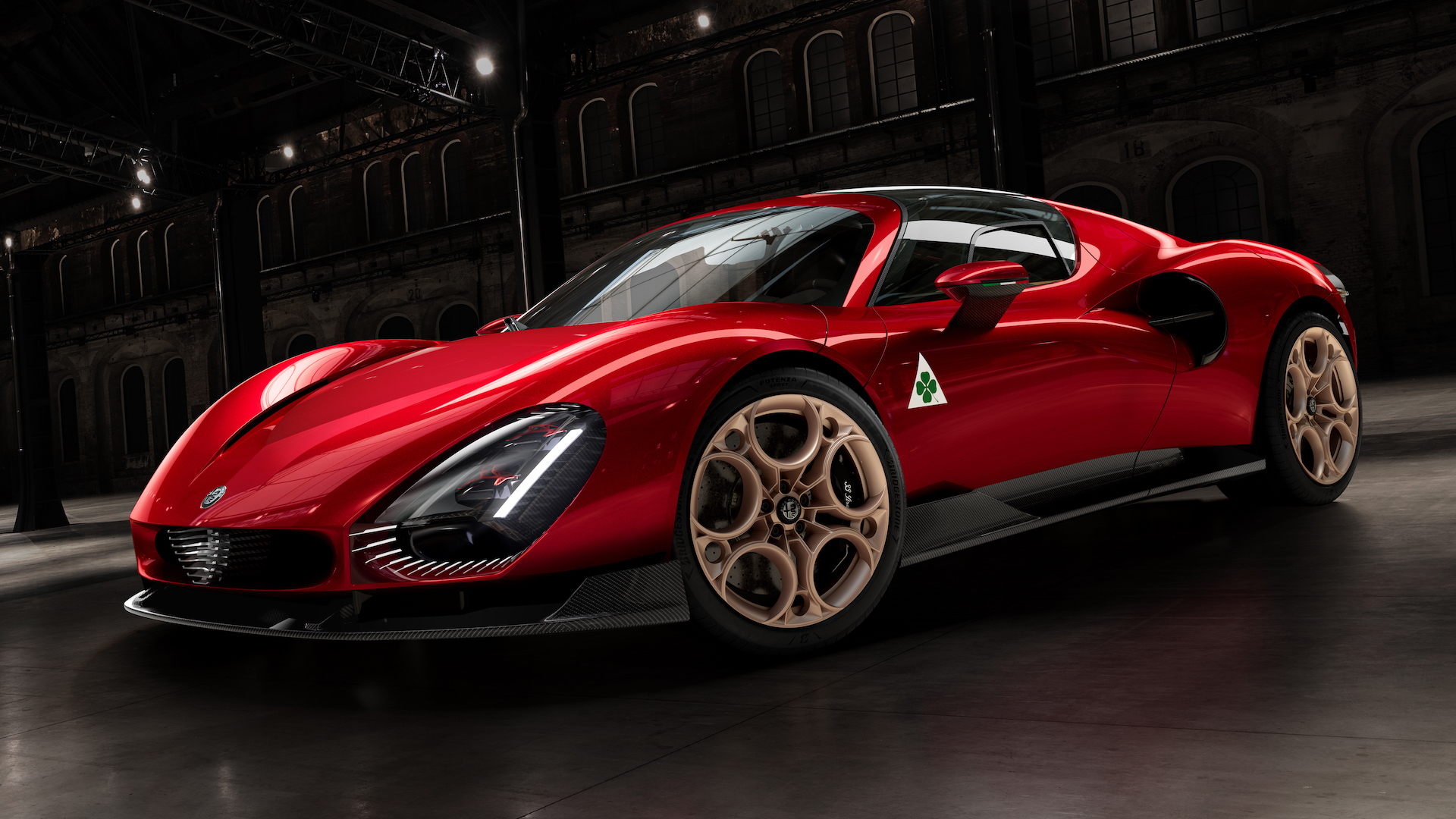

The Alfa Romeo 33 Stradale is one of only a few cars out there that’ll be available with both a V6 engine and a fully electric drivetrain. While that lets it swing from both sides of the plate, it also highlights just how much heavier EVs are than their combustion counterparts these days. And try as Alfa Romeo might, there’s no way that doesn’t affect the supercar’s handling.
The limited-production, 33-unit-only Alfa supercar debuted earlier today, with one version using a 3.0-liter, twin-turbo V6, and the other a 102 kilowatt-hour battery feeding an 800-volt, tri-motor drivetrain. The difference in their weight is stark, with the V6 model said to weigh less than 3,307 pounds, and the EV a good 1,300 lbs more at (under) 4,630 lbs. Because of the EV’s power advantage though, the two are said to perform pretty much identically in a straight line, doing zero-to-60 in under three seconds, and stopping in a similar sub-108 feet. (That said, the EV runs out of steam at high speed, and has a slightly lower top speed.)

Their handling differences may be minimized by torque vectoring, which seems to be offered only on the EV. But even then, it’s impossible to completely hide the effect that a 40-percent weight gain has on a car’s performance. For starters, it could significantly alter the weight distribution, which in the ICE is concentrated in the motor and transmission. Then there’s the tires, which will likely need to be unique to the EV to withstand the greater weight, with stronger sidewalls that could hamper ride quality, and a compound that behaves differently. The extra weight will also exert more stress on the road, and could prove consequential in a crash.
Interestingly enough, the EV comes in at almost exactly triple the weight of the car it was named for. The first Alfa Romeo 33 Stradale launched in 1967 as a street-legal derivative of the Tipo 33 sports car, the company’s highest-performing prototype racer. Think of it as the 1960s equivalent of a Le Mans Hypercar homologation special. It wasn’t an initial success, but it was pretty, had a hair-raisingly high-revving 2.0-liter V8, and most importantly of all, it was light.

According to Autozine, it weighed in at just 1,543 pounds, or less than two thirds what a 2023 Mazda MX-5 does. And modern cars don’t get much lighter than the Miata. Do some mental math, and you’ll realize that’s almost exactly a third the weight of today’s EV. Today’s car may have half a century of tire technology improvements and computerization to help it out, but it couldn’t be clearer that the only thing the two have in common is name and appearance—and even then, only partially.
Still, I’ll be the one to say it: I don’t care. Rehashing old names and designs on vastly different modern cars is a decades-old proven formula, and the 33 Stradale doesn’t dishonor its namesake. Would I take the V6 model over the EV? Absolutely, but I wouldn’t say no if someone dangled the EV’s key fob in my face.
Neither you nor I can afford one, so it’s not like our opinions are of monetary consequence to Alfa. It has already sold every last one of the 33 Stradale’s limited production run, and we’ll all be better for it, because the world could use more pretty cars. Even if some are a lot heavier than looks suggest.
Got a tip or question for the author? You can reach them here: james@thedrive.com